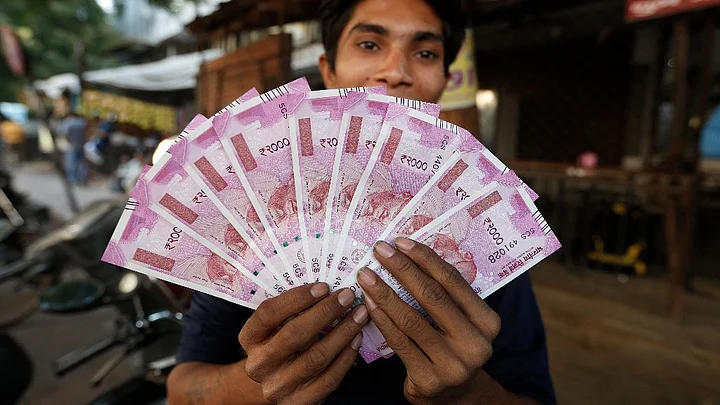The fall in the Indian currency has been the subject of much debate this year. The depreciation, the response to it and its implications have been discussed threadbare.
But economists, including those on India’s monetary policy committee, still differ on the best benchmark to use to understand the depreciation in the rupee and, consequently, the appropriate policy response to it.
The Spot Rate
The most commonly used measure is the spot rate for the rupee. It trades every day. Everyone can see how much the rupee gains or falls. Reactions follow.
For the year-to-date, the rupee has fallen 13 percent, in response to higher oil prices and foreign portfolio outflows.
This fall, one of the steepest seen in recent years, has prompted fears of inflation risks among other things.
Monetary Policy Committee member Chetan Ghate flagged off this fall as one of the upside risks to inflation. Citing already rising inflation expectations, Ghate said this, together with a weaker rupee and higher oil prices, could lead to unhinging inflationary expectations.
“What makes these cumulative increases in inflationary expectations salient, is that they risk being unanchored by both the seven percent nominal depreciation in the INR and the $13 a barrel increase in the price of oil, since the August 2018 policy.”Chetan Ghate, Member, Monetary Policy Committee
The Nominal Effective Exchange Rate
One reason why some policymakers are comfortable with the fall in the rupee is that its fall is not isolated.
Sure, the rupee is the worst performing currency in Asia this year but other emerging market currencies have also fallen. The steeper fall in the rupee may be partly an adjustment for the relatively stable exchange rate over the last few years.
MPC member Ravindra Dholakia said that a better way to look at the rupee depreciation is to look at Nominal Effective Exchange Rate against a basket of currencies of India’s trade partners.
The 36-country NEER index of the RBI shows a roughly eight percent decline so far this year, according to Bloomberg data.
“While there is a considerable depreciation of Indian Rupee against US Dollar recently, the rate of depreciation is substantially lower in terms of trade-weighted Nominal Effective Exchange Rate, because other currencies have also depreciated against US Dollar. It is the depreciation in NEER that affects headline inflation. As a result, its impact on inflation is not likely to be very substantial.”Ravindra Dholakia, Member, Monetary Policy Committee
The Real Effective Exchange Rate
A third way to look at the rupee depreciation is the Real Effective Exchange Rate. The REER index takes the Nominal Effective Exchange Rate and adjusts it for inflation.
The 36-country REER index shows that the rupee, by this measure, has depreciated about nine percent.
Citing the relatively lower depreciation in the REER when compared to spot exchange rate, brokerage house CLSA said that further depreciation in the spot exchange rate can’t be ruled out just yet.
Some economists believe that, in the present context of a widening current account deficit, a fall in the REER would be important to boost export competitiveness.
“All else being constant, a close to 12 percent depreciation in the real effective exchange rate can indeed stabilise the current account deficit,” said Pranjul Bhandari, Chief India Economist at HSBC in a report analysing India’s balance of payments released earlier this month.
The Right Policy Response
The measure of currency depreciation used by the RBI would be important in determining its response. Should the central bank feel that the depreciation in the NEER is not significant, it may limit its response to intervention via its foreign exchange reserves. That has been the preferred response so far.
In the post-policy press conference, RBI Governor Urjit Patel highlighted that the depreciation in the Indian currency is in line with the trend across emerging markets.
However, should markets overextend and the fall in the REER and NEER start looking excessive, the RBI may consider other options such as an NRI bond or a foreign currency deposit scheme.
(This article was originally published on BloombergQuint and has been republished in an arrangement.)
